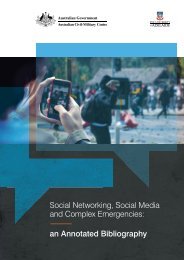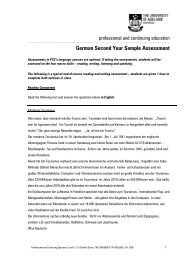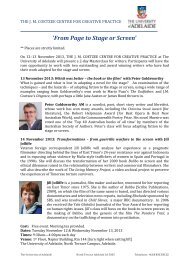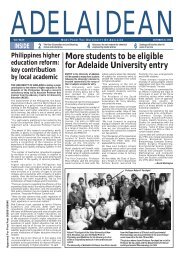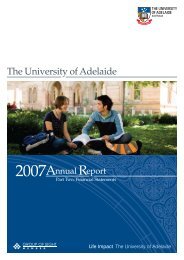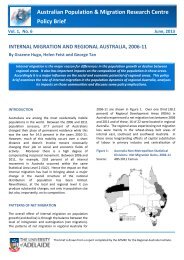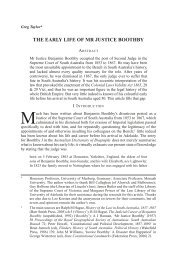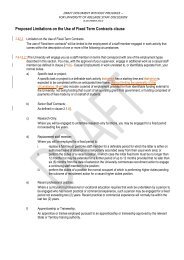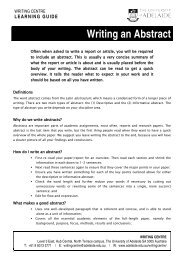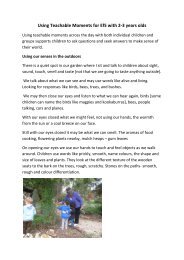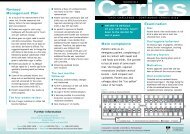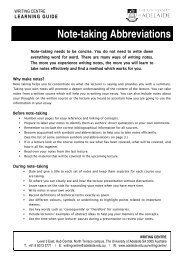Unbridling the Tongues of Women - The University of Adelaide
Unbridling the Tongues of Women - The University of Adelaide
Unbridling the Tongues of Women - The University of Adelaide
Create successful ePaper yourself
Turn your PDF publications into a flip-book with our unique Google optimized e-Paper software.
Edging out <strong>of</strong> <strong>the</strong> domestic sphere<br />
<strong>the</strong> United States for dealing with children deemed delinquent; its members included<br />
Lady Ayers, Mrs Colton, and Mrs Davenport, all wives <strong>of</strong> wealthy public figures<br />
in <strong>the</strong> colony. <strong>The</strong>ir acquaintance was wide, and <strong>the</strong>ir social prominence might have<br />
attracted social climbers as well as <strong>the</strong> genuinely philanthropic to <strong>the</strong> ranks <strong>of</strong> <strong>the</strong><br />
visitors. 36<br />
Spence’s <strong>of</strong>fice as treasurer was not arduous: <strong>the</strong> Society’s funds came from subscriptions,<br />
seldom amounted to more than £10 a year, and were spent on stationery.<br />
For several years, she combined that <strong>of</strong>fice with Emily Clark’s as secretary: in l877-79<br />
when Clark was abroad, and from 1883 to 1886, when Clark’s health compelled her<br />
to resign. Spence also visited <strong>the</strong> industrial school and <strong>the</strong> girls’ reformatory quite<br />
frequently. In <strong>the</strong> mid-1880s, she remarked that she ‘would visit it <strong>of</strong>tener if it were<br />
not so far away, making a fatiguing day’. 37 It is possible that she walked <strong>the</strong> five or so<br />
miles from her house in College Park to Magill. She undertook, too, a good deal <strong>of</strong><br />
visiting for <strong>the</strong> Society.<br />
<strong>The</strong> children to be visited were divided into three groups. <strong>The</strong> first were children<br />
under <strong>the</strong> age <strong>of</strong> 12, attending school, living with people who received an allowance<br />
for <strong>the</strong>m from <strong>the</strong> Destitute Board. <strong>The</strong>se were <strong>the</strong> children who were, in Spence’s<br />
and Clark’s view, properly ‘boarded out’. <strong>The</strong> second were children under 12 and at<br />
school, who were referred to as ‘licensed for adoption’, because <strong>the</strong>y were taken without<br />
<strong>the</strong> Destitute Board’s allowance. <strong>The</strong> chairman <strong>of</strong> <strong>the</strong> Destitute Board, Thomas<br />
Sadler Reed, preferred placing children with families to whom he did not need to<br />
pay an allowance. Between <strong>the</strong> beginning <strong>of</strong> 1873 and June 1883, he arranged for<br />
a total <strong>of</strong> 2239 children to be adopted. During <strong>the</strong> same period only 591 children<br />
were boarded out under subsidy. 38 Emily Clark found Reed’s procedures most annoying.<br />
‘Unfortunately’, she commented, ‘he afterwards made a great mistake in<br />
trying to substitute adoption in place <strong>of</strong> boarding out, and we were extremely vexed<br />
to find him taking <strong>the</strong>m for nothing’. Spence, too, considered Reed’s parsimony<br />
with government funds obstructive; she held that it was directly responsible for <strong>the</strong>re<br />
still being 103 children in <strong>the</strong> industrial school in 1885, suffering an epidemic <strong>of</strong><br />
ophthalmia. 39 <strong>The</strong> third group were adolescents between <strong>the</strong> ages <strong>of</strong> 12 and 16 who<br />
were apprenticed to <strong>the</strong>ir guardians and received wages, most <strong>of</strong> which were put in<br />
<strong>the</strong> bank for <strong>the</strong>m. This practice dated from 1848, long before <strong>the</strong> formation <strong>of</strong> <strong>the</strong><br />
Boarding-Out Society. 40 <strong>The</strong> Society visited children in all three groups, but since<br />
<strong>the</strong> government subsidy was paid for only those in <strong>the</strong> first group, it had little power<br />
to affect <strong>the</strong> conditions <strong>of</strong> life <strong>of</strong> those in <strong>the</strong> second and third.<br />
85



